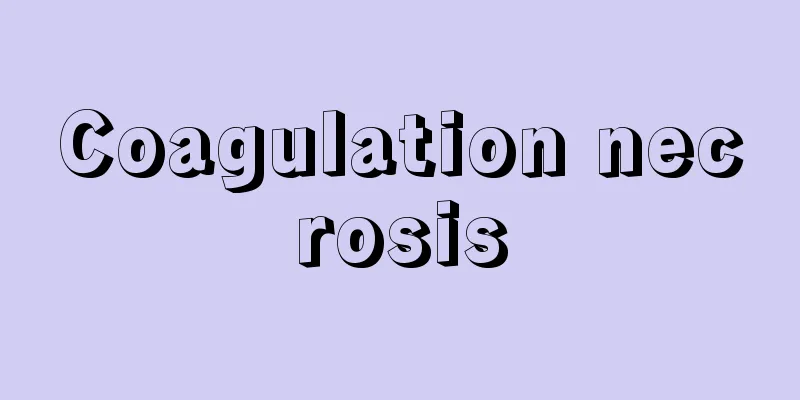Ampere's law

|
When current flows through an electric wire, a magnetic field is generated around the current. The following relationship that holds between current and magnetic field is called Ampere's law: "Draw a closed curve within the magnetic field, and add up the tangential component of the magnetic field H on this closed curve. This value is equal to the total current flowing through the closed curve." This law was discovered by the French physicist Ampere (1822). It is the same law as Biot-Savart's law, which is the fundamental law that describes the magnetic field generated by electric current. shows the case of a sufficiently long straight current. In this case, the magnetic field lines become concentric circles centered on the current. Take a circle of radius r , and let the magnetic field on it be H. If these magnetic field lines are taken as a closed curve, the cumulative total of the tangential components of the magnetic field H on this closed curve is 2π rH . According to Ampere's law, this value is equal to the current I that penetrates this closed curve. shows an example of the application of Ampere's law to a coil with an iron core. If the length of one revolution of the magnetic field lines in the iron core is L , and the average strength of the magnetic field is H , then the cumulative total of the tangential components of the magnetic field on this magnetic field line is LH . If the coil has N turns, the current that flows through this closed curve is NI . According to Ampere's law, LH = NI . When the electric field changes over time, an electric flux current flows in that space. The total current in Ampere's law generally includes electric flux current in addition to normal current. If we think in this way, Ampere's law can be applied without exception to current circuits that include capacitors, especially to the magnetic field in the space between the electrodes of a capacitor. In addition, the right-hand rule, which describes the direction of the magnetic field created by an electric current, is sometimes called Ampere's law. [Shigeo Yamaguchi] [References] | | | | | |©Shogakukan "> Application example of Ampere's law (Figure B) ©Shogakukan "> Ampere's Law (Figure A) Source: Shogakukan Encyclopedia Nipponica About Encyclopedia Nipponica Information | Legend |
|
電線に電流が流れると、電流の周りに磁界(磁場)が生ずる。この電流と磁界との間に成り立つ次の関係をアンペールの法則という。「磁界の中に閉曲線をとり、この閉曲線上で磁界Hの閉曲線の接線方向の成分を積算する。この値は閉曲線を貫いて流れる全電流に等しい」。これはフランスの物理学者アンペールが発見した(1822)。電流から発生する磁界を表す基本法則であるビオ‐サバールの法則と同等の法則である。 は十分に長い直線電流の場合である。このとき、磁力線は電流を中心とする同心円となる。半径rの円をとって、その上の磁界をHとする。この磁力線を閉曲線にとると、この閉曲線上の磁界Hの接線成分の積算量は2πrHである。アンペールの法則によれば、この値は、この閉曲線を貫く電流Iに等しい。はアンペールの法則の鉄芯(しん)のあるコイルへの応用例を示す。鉄芯の中の磁力線の1周の長さをL、磁界の平均的な強さをHとすれば、この磁力線上の磁界の接線成分の積算量はLHである。この閉曲線を貫いて流れる電流は、コイルがN回巻きとすればNIである。アンペールの法則によればLH=NIとなる。電界が時間的に変化するとき、その空間には電束電流が流れる。アンペールの法則における全電流には、一般には通常の電流のほかに電束電流も含める。このように考えると、コンデンサーを含む電流回路、とくにコンデンサーの電極間の空間の磁界に対してもアンペールの法則を例外なく適用できるようになる。 なお、電流がつくる磁界の方向を表す右ねじの法則も、アンペールの法則ということがある。 [山口重雄] [参照項目] | | | | | | |©Shogakukan"> アンペールの法則の応用例〔図B〕 ©Shogakukan"> アンペールの法則〔図A〕 出典 小学館 日本大百科全書(ニッポニカ)日本大百科全書(ニッポニカ)について 情報 | 凡例 |
<<: Amboise (English spelling)
Recommend
Epixerus
…They build nests in trees using bark and other f...
Black book/Blue book
A type of early kusazoshi published in Edo. It app...
Ticket gate - kaisatsuki
〘noun〙 An unmanned ticket gate that checks tickets...
Horse chestnut (Aesculus turbinata Bl.)
A deciduous tall tree of the Aesculaceae family wi...
Diminishing returns to scale
...This means that when the input of land as a pr...
Coal mining - Saitan (English spelling)
Coal mining is the process of digging up the coal...
Cell organelles
A general term for structures inside cells that a...
Oinochoe - Oinochoe (English spelling)
A type of Greek pottery. It means "wine pour...
Werewolf - Wolf Man
The story is about a normal human during the day ...
Incense Cedar - incense cedar
…H stands for hard, B for black, and F for firm. ...
Hestina assimilis (English spelling) Hestina assimilis
…[Takakura Tadahiro]. … *Some of the terminology ...
Loggia (English spelling)
An architectural term. A term generally referring ...
Nuclear explosion
An explosion caused by a nuclear reaction, such as...
Currency Note
Please see the Emergency Currency page. Source: E...
Philosophical magazine - tetsugakuzasshi
A representative Japanese journal for philosophica...









